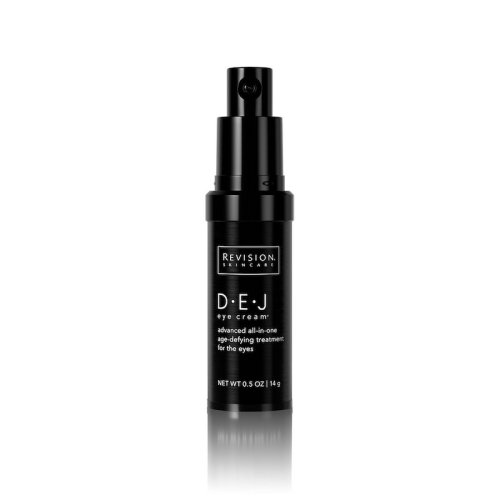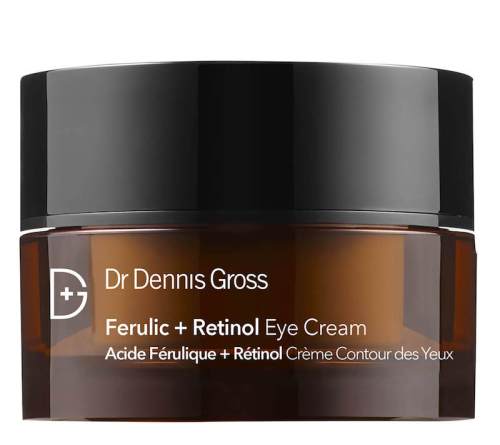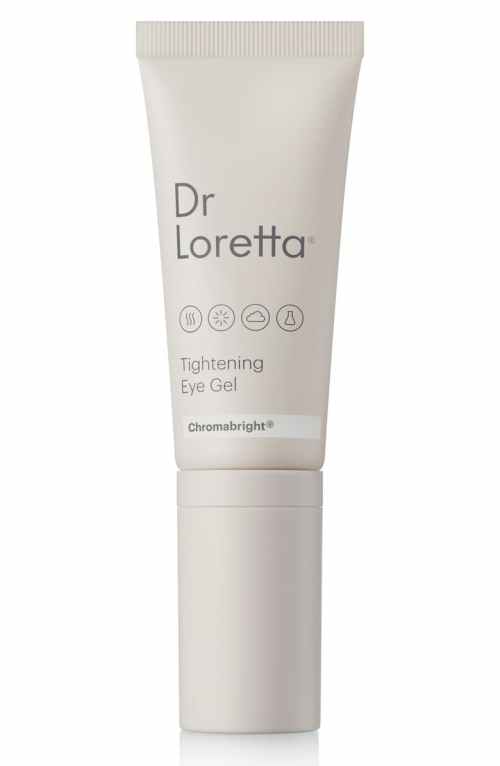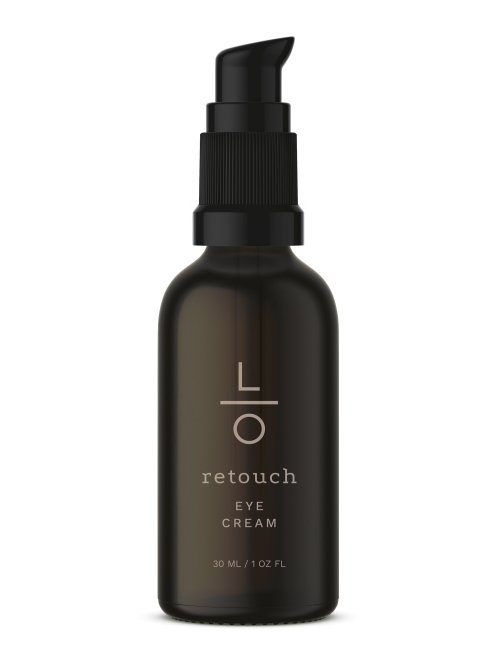Our editors independently select these products. Making a purchase through our links may earn Well+Good a commission
Some skin-care products are non-negotiables, like moisturizers and cleansers. Others are so polarizing that the mere mention of them can spark an hour-long debate between beauty enthusiasts. Eye creams fall into the latter category, which is why we’ve tapped dermatologists to reveal the truth once and for all to the age-old question: Does eye cream work, or nah?
Experts in This Article
board-certified dermatologist and founder of Dr. Dennis Gross Skincare
board-certified dermatologist and founder of Dr. Loretta Skincare
Seemal Desai, MD, FAAD is a board-certified dermatologist and founder & medical director of
Innovative Dermatology in Dallas, Texas. He is also the Immediate Past President of Skin of Color Society.
Eye creams are divisive because there’s not one but many misconceptions about the category, making it one of the least-understood beauty products on the shelves. From reaching for retinol in your eye product (or not) to whether they can combat dark circles, keep scrolling for the low-down on the biggest myths surrounding eye creams.
1. Your moisturizer works just fine for your eye area
One of the biggest arguments against using eye creams is the belief that your go-to moisturizer will work just fine under the eye area. In many cases this is true, but thick, goopy actives might be too much for the delicate skin there, causing irritation or congestion that’s hard to nix.
“I have seen patients who have really fantastic daily facial moisturizers, and if they put it too close to their eyelids, they get irritated,” says dermatologist Seemal Desai, MD, founder and medical director of Innovative Dermatology, pointing to skin reactions like eyelid dermatitis, inflammation, itching, and peeling. “The eyelid skin is so thin that the propensity for getting irritation and then subsequent inflammation around there is much higher [than the rest of your face.]”
Another risk of using creams in the eye area? Milia, or blocked pores that show up as tiny white bumps. “Milia is one of the major things that can happen when using facial moisturizers under the eye,” says Dennis Gross, MD, board-certified dermatologist and founder of Dr. Dennis Gross Skincare. “Certain ingredients that are great for the face are just too much for the eye area.” (Think anything that’s too harsh or that’s comedogenic.)
Shop now: Revision Skincare D-E-J Eye Cream, $97
2. You can’t use retinol on your eye area
Speaking of strong skin-care ingredients: Some people are afraid to use a retinoid in the delicate eye area for fear that it will erupt in irritation. But according to derms, the right formulations can be excellent for plumping up the delicate under-eye skin.
“Retinols are certainly a mainstay of helping with fine lines, wrinkles, texture, and tone around the eyelids,” says Dr. Desai. That said, not all retinoids are equal—and it’s important to choose the right one to avoid potential irritation. Get a retinol product that’s specifically meant for the eye area. Dr. Desai prefers cosmeceutical retinol formulations versus prescription retinoids since prescriptions can be too strong for this area. Dr. Gross recommends using retinol-spiked eye products that pair the ingredient with an antioxidant (he prefers ferulic acid), as it can make the retinol gentler.
Shop now: Dr. Dennis Gross Skincare Ferulic + Retinol Eye Cream, $69
3. Eye cream doesn’t work for dark circles
You may have heard that eye cream won’t do anything for dark circles because they’re genetic. And that’s true for some people—but dermatologists say that eye creams can make a difference in dark under-eye circles, as long as you know what to look for.
Dark circles can be caused by either an excess of pigment, vascularity, or genetics. “If it’s genetic, you’re going to start to see it at a younger age,” says Loretta Ciraldo, MD, board-certified dermatologist and founder of Dr. Loretta Skincare. “When it’s vascularity, it’s when you have thinner skin under the eyes that shows blood vessels through.” For combatting dark circles caused by blood vessels showing underneath the skin, Dr. Ciraldo says that there are peptides found in some eye products that specifically help with this.
If you’re not sure which kind of dark circles you’re dealing with, Dr. Ciraldo and Dr. Desai are fans of using antioxidants (like vitamin C or green tea) to protect the skin from environmental damage that can further pigmentation. Hot tip: If you try something with vitamin C, Dr. Ciraldo suggests using a stable, gentler derivative of the antioxidant rather than L-ascorbic acid (the most potent form) since this can be irritating in the eye area.
Shop now: Epi.logic Eye Contact 360 Night Repair Cream, $90
This Parisian Skincare Brand Is Launching in the United States for the First Time—Here’s What a Derm Wants You to Know

We’re Calling It: Cleansing Balms Are the Face Wash of the Future—Here Are 3 to Add to Your Cart

This Is the One Product That Scarlett Johansson Always Keeps in Her Purse and on Her Bedside Table

4. Eye cream isn’t your best bet for puffiness
It can seem as though massaging out eye puffiness with something like a jade roller or gua sha stone would be more effective than applying a cream—but topicals can help. “When you have puffiness in the eye area, there’s actually free-floating water underneath the skin,” says Dr. Gross. While massage tools can help, he explains that these won’t address the underlying problem of excess fluid.
“The lymphatic system is very fragile, which is why it leaks in the first place, so when you massage it, it has the potential to injure the vessels beneath the lymphatic system,” says Dr. Gross. “You might look better temporarily, but it’ll come back worse over time. The key is to restore the structure of the wall itself.”
The solution? Look for antioxidants in eye creams. “These are highly beneficial to inflammatory concerns, which start with your blood vessels,” says Dr. Gross. Caffeine is another ingredient derms like for puffiness since it’s a vasoconstrictor—something you could get through green tea extract. “I recommend green tea, as it has caffeine and a lot of antioxidant benefits,” says Dr. Ciraldo.
Shop now: Dr. Loretta Tightening Eye Gel, $60
5. Sunscreen doesn’t belong in your eye area
If you’ve ever gone swimming or done a vigorous workout in the heat, chances are you’ve felt your eyes sting from sunscreen dripping into them. While that’s never fun, SPF is really important for your eye area. “Skin cancers do happen on the eyelid itself,” says Dr. Desai. “We certainly want people when applying sunscreen to remember not to forget their eyelids.” Plus, since the skin around your eyes is thinner, it’s easier to damage from the sun’s harmful rays—so be sure to keep it protected. As for what kind of sunscreen to turn to, Dr. Desai says that it’s your choice—it doesn’t matter if it’s mineral or chemical-based, as long as you’re covered.
Shop now: SkinCeuticals Physical Eye UV Defense SPF 50, $30
6. Eye cream only goes on the sides and beneath your eyes
Some of the biggest concerns about the eye area include crow’s feet and under-eye circles, but that leaves out about half of the skin surrounding your eyeballs. You can experience hyperpigmentation both underneath and above your eyes, says Dr. Desai, which can be treated with the right ingredients in an eye product.
That said, it’s important to use your eye product as directed. Dr. Gross points out that his brand’s retinol and ferulic acid eye serum is meant to be applied all over the eye area, as it helps with the elasticity of the eyelid—but not all formulations are equal.
Shop now: Lana Ogilvie Retouch Eye Cream, $50
7. You don’t need an eye cream
Because the composition of the skin surrounding your eyes is different than the skin on the rest of your face, dermatologists believe that eye creams are actually beneficial to beauty regimens (especially if you have skin concerns in that area). “Eye creams and eye serums definitely have a role in skin care,” says Dr. Desai.
Eye products are formulated differently than facial skin-care products. “It’s key to formulate carefully [for the skin around your eyes], in order to not cause milia, or to enlarge glands in that area, and to use certain concentrations of ingredients that are safe for this skin,” says Dr. Gross. So, the verdict is: The product category undoubtedly deserves its place on beauty shelves.
Shop now: RoC Multi Correxion 5-in-1 Eye Cream, $30
Take it from another derm:
Oh hi! You look like someone who loves free workouts, discounts for cult-fave wellness brands, and exclusive Well+Good content. Sign up for Well+, our online community of wellness insiders, and unlock your rewards instantly.
Sign Up for Our Daily Newsletter
Get all the latest in wellness, trends, food, fitness, beauty, and more delivered right to your inbox.
Got it, you've been added to our email list.















